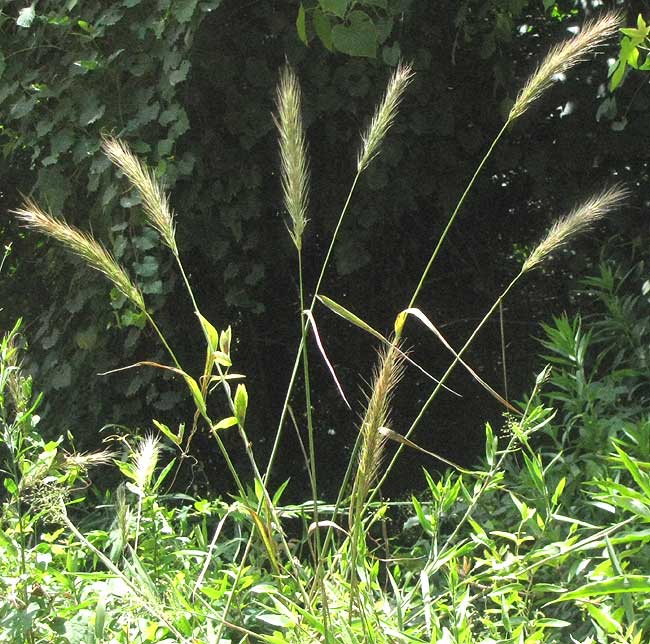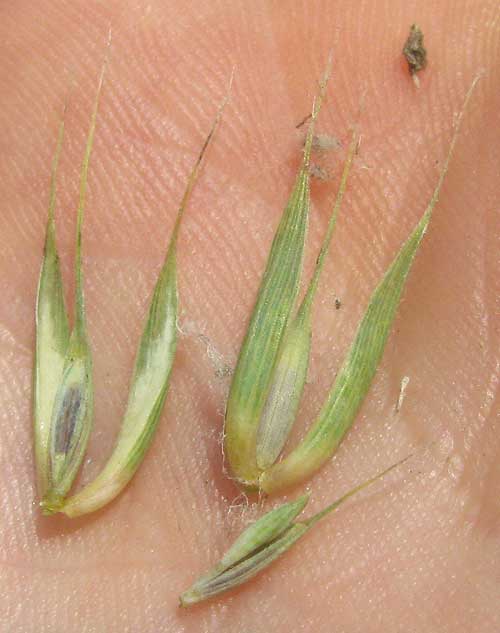Excerpts from Jim Conrad's
Naturalist Newsletter

from the the July 8, 2012 Newsletter issued from the woods of the Loess Hill Region a few miles east of Natchez, Mississippi, USA
WILD RYE
Nowadays along roadsides not mowed and herbicided into oblivion, among the more graceful presences are the flowering grasses shown above. A close-up shows the grasses' very unusual spikelets below:

If you are familiar with the "normal" construction of more typical grasses such as bluegrass and fescue, what that picture shows may not make much sense. You can review "normal" glass-flower anatomy at http://www.backyardnature.net/fl_grass.htm.
On that page, notice the scoop-shaped glumes at the bottom of a typical spikelet. Our roadside grasses also have glumes, but they are highly modified, in that they are twisted around so that they are positioned side-by-side, not opposite one another as is more typical. Also the glumes in our roadside grass, instead of being scoop-shaped, are flattened and elongated, and tipped with needlike spines, or "awns." You can see two spikelets removed from their spike, with grain-producing florets between their two glumes, below:

This peculiar anatomy distinguishes an important grass genus, the Wild Rye or Wheatgrass genus Elymus, of which about 150-200 species are recognized, depending on your expert. The genus is best represented in Asia and North America, but present elsewhere, and is thought of as a "cool-temperate" genus. Some species are grown for forage. Western North America has more species than the East.
Our roadside Elymus is Virginia Wild Rye, ELYMUS VIRGINICUS, a perennial found throughout most of forested eastern and central North America, and likely to be found in open woods, thickets, stream banks, open ground, and very often along roadsides.
Wild Rye, genus Elymus, is very different from the Rye of rye bread fame, which is the Eurasian Secale cereale. Rye has "normal" glumes, nothing like Wild Rye's strange, side-by-side, flattened ones.